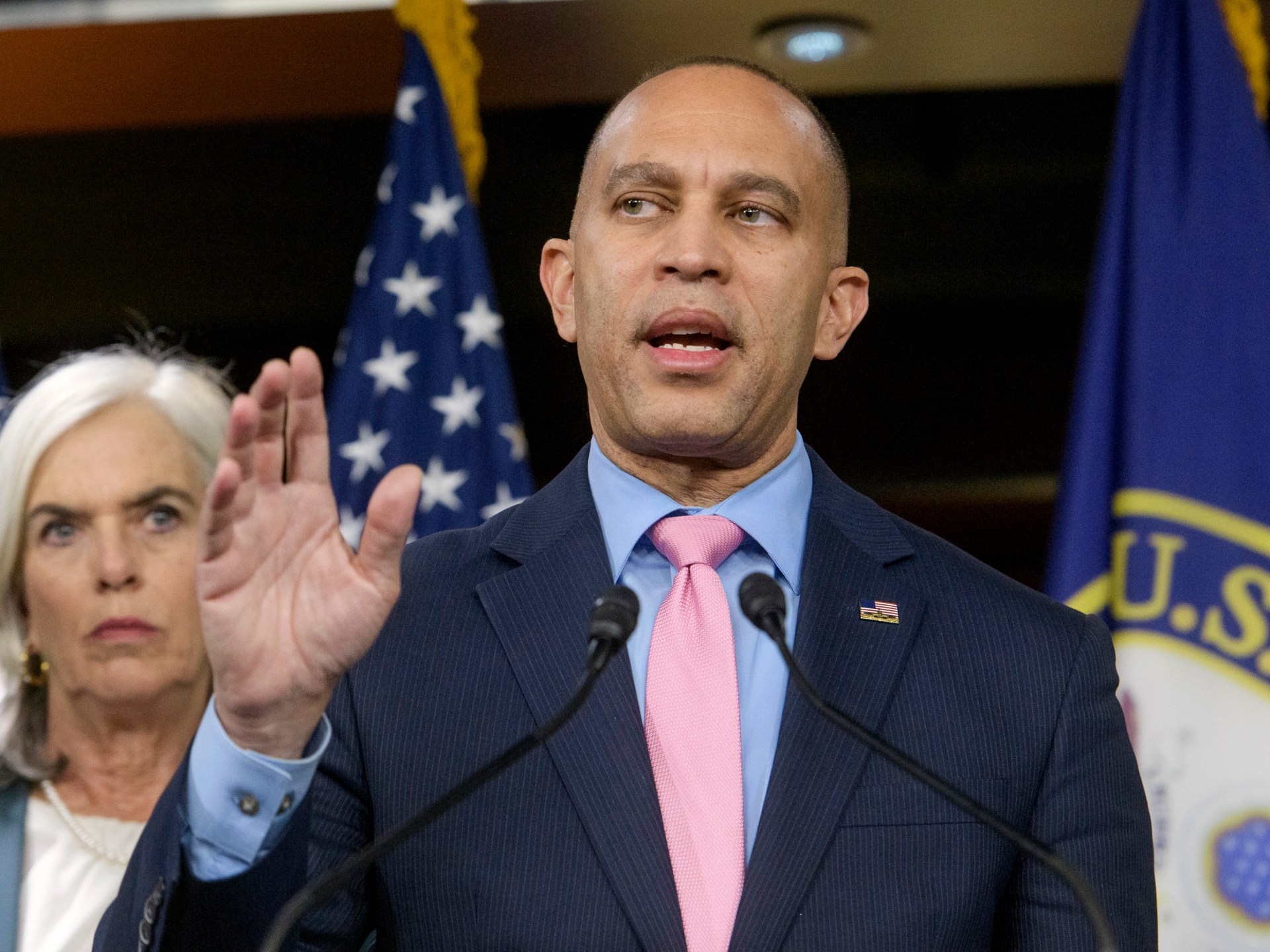EXPLAINER
By
The leader of the Democrats in the United States House of Representatives, Hakeem Jeffries, has slammed House Republicans for considering cuts to federal safety net programmes, pointing out that they would impact veterans.
“About 20 percent of households with veterans rely upon supplemental nutritional food assistance,” the representative for New York’s 8th Congressional District said on Thursday, referring to the Supplemental Nutrition Assistance Program (SNAP), sometimes called food stamps.
Jeffries’s statement followed news reports that House Republicans are pushing to limit future SNAP benefit increases, add additional work requirements and shift some SNAP costs – which historically have been entirely paid by the federal government – to states.
Jeffries cited an inaccurate figure. The share of veterans relying on SNAP benefits is about 8 percent, according to an April 2 report from the Center on Budget and Policy Priorities, a liberal think tank.
Jeffries’s office did not provide evidence to back up his statement.
The Center on Budget and Policy Priorities report cited Department of Agriculture data showing that 11 percent of veterans aged 18 to 64 nationwide experienced food insecurity from 2015 to 2019. The department defined food insecurity as “limited or uncertain access to enough food” because of a lack of economic resources. The department found that veterans were 7 percent more likely than nonveterans to experience food insecurity after controlling for a range of socioeconomic and demographic characteristics.
The centre’s report used US Census Bureau data from 2021 to 2023 to estimate the number of veterans living in households that received any SNAP benefits during the 12 months before being surveyed.
The report estimated that more than 1.2 million veterans lived in households receiving SNAP benefits, which is 8 percent of the total population of 16.2 million US veterans during that period.
Luis Nunez, a research analyst with the Center on Budget and Policy Priorities and author of its report, said the 8 percent covers all veterans whether they live alone or with others.
The highest percentage of veterans on food stamps in any state was 14 percent in Oregon, followed by 11 percent in Louisiana, New Mexico and West Virginia.
Nationally, 8% of veterans receive food stamps; no state is higher than 14%
Data from a few years earlier showed lower percentages than the Center on Budget and Policy Priorities report.
The Rand Corporation think tank studied data from 2015 to 2020 and found 4.9 percent of veterans nationwide lived in households receiving SNAP benefits at some point in the previous 12 months. A 2022 Government Accountability Office report found 6.5 percent of all veterans received SNAP benefits in 2019. And the Agriculture Department found that in 2018 and 2019, the average was 6.6 percent.
Our ruling
Jeffries said, “About 20 percent of households with veterans rely upon” the Supplemental Nutrition Assistance Program.
An April 2 study found that 8 percent of veterans in the US rely on SNAP benefits. No state had a share higher than 14 percent.
Studies with data from a few years earlier show rates from 4.9 percent to 6.6 percent.
Source: Aljazeera

Leave a Reply